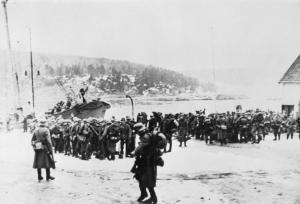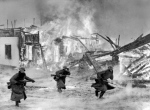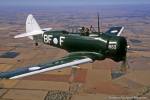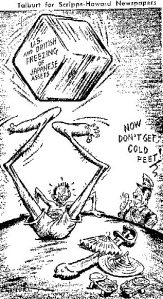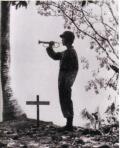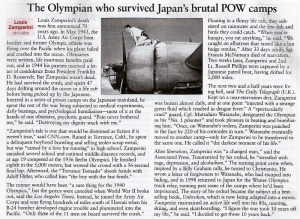
The caption should read, “Tenno HEIKA banzai”
Caption correction of the shout is courtesy of Mustang Koji who can be found HERE!!
Click photo to read caption.
On 18 February 1931, the League of Nations, with America in the lead, issued the “Nonrecognition Doctrine” which pushed Japan’s anger even further. [ to read what is also known as the Stimson Doctrine – click HERE!! US Ambassador Joseph Grew in Tokyo persisted in his warnings against this action. But, even the in-coming president [FDR] and Secretary of State, Cornell Hull argued for the status quo.

Ambassador Joseph Grew, 1939

Stimson w/ the Doctrine, 1939
In 1936, FDR and his drive for naval appropriations caused 50,000 veterans to stage a March for Peace in front of the White House. Children were organized under a banner of “Money for schools, not battleships.” Privately, FDR raged about isolationists and pacifists as early as 1937 when he held a rally in Chicago in the attempt to gain support to “quarantine” Japan. The Japanese quest to become a major world power became their primary goal.
In 1939, FDR sent $25 million to the Chunking government to carry on their war with Japan; while Britain told Australia and New Zealand not to worry – the US would not remain indifferent to the Japanese threat in the Far East. The Australian Prime Minister told the Canberra Parliament, “What Great Britain calls the Far East is to us the Near North.” Richard Casey met with the British Foreign Office and was told, “the defense of the territories in the Pacific would be determined by the needs in Europe” – they were virtually being abandoned.

FDR campaigning in Warms Springs, GA, 4 April 1939
By January 1940, Churchill was cabling FDR daily for more aircraft and supplies to help Britain keep good its promise, “We shall never surrender;” under the Lend Lease Program, [which was being stretched beyond its legal limits more and more each day]. Japan’s growing power was being ignored. What was commonly misunderstood by Western cultures was that the Japanese Army and Navy Ministries were part of the governmental structure and the military was gaining power each day.
The British interwar plans for a conflict with Japan as early as 1940 depended entirely on the US. The American plans named “Orange” envisioned a trans-Pacific projection of US power, with Manila serving as a base of operations in the Far East. But, by 1941, “Plan Dog” foresaw the Atlantic as the offensive and the Pacific in a defensive state.

Japan’s Second Cabinet, early 1940
By 1941, the regular cabinet members of the Japanese gov’t were on a need-to-know basis and entire civilian cabinets were forced to resign as the war drew closer. Japan’s signing of the Tripartite Pact on 27 September 1940 with Germany and Italy, [was to Japan], a trade agreement, plus a way to keep Russia busy and unable to hinder her while she invaded Indochina. This was not the view of the West and caused further deterioration of Us/Japanese relations.
In his campaign for an unprecedented third term in office, FDR spouted in Boston, MA, “I give you one more assurance. I have said it before, but I shall say it again and again and again: Your boys are NOT going to be sent to any foreign war.” (As we all know now – that was merely a hollow political promise.).
To be continued…..
Click on images to enlarge.
############################################################################################
A View of the homefront – 1939
This slideshow requires JavaScript.
############################################################################################
Political Cartoon of the times –

############################################################################################
Farewell Salutes –
Robert “Eggs” Avington – St. Petersburg, FL; US Army (Ret.), Korea, Distinguished Service Cross, Purple Heart
Thomas Cushing – Hopkinton, NH; US Army, WWII, PTO
Marjorie Effinger – Atwater, CA; US Army, nurse, PTO
Thomas Groom – Christchurch, NZ; RNZ Army# 19274, WWII
Patrick Holland – Halifax, Can; RC Navy, RC Army, RC Air Force, Major (Ret. 42 years) 3rd Clasp to the Canadian Decoration
William McFatter – Vernon, FL; US Army, WWII, ETO, Purple Heart
Robert McCurley – Springfield, IL; US Army Air Corps, WWII, POW
Melvin Shubert – NY & Lake Worth, FL; US Navy, WWII, Medical Corps
Tedrowe Watkins – Big Fork, Montana; US Marine Corps, WWII
############################################################################################

























